This summer has hardly been the best for railroads all around the world. Several high-profile, and unfortunately deadly, derailments and accidents have occurred in an array of cities. In June a commuter train hit another stopped train in Argentina, claiming three lives and injuring over three hundred. July brought an exceptionally destructive derailment, where a runaway freight train carrying crude oil exploded in the small town of Lac Megantic, Quebec. More than thirty of the town’s buildings were destroyed, and forty-two were killed, with five others missing and presumed dead. Not long after that, six people lost their lives when a train in France derailed and crashed into a station platform. Most recently, a serious derailment in Spain – which appears to be due to the engineer speeding – took the lives of at least seventy-eight.
[youtube:http://www.youtube.com/watch?v=g5NyBO75YYc]
The serious train derailment in Spain, where at least 78 people died.
At the start of it all in May was Metro-North’s most serious accident in many years, when an M8 derailed and collided with another M8 on the opposite track in May. Proving the mettle of the newest of Metro-North’s rolling stock, no lives were lost in the derailment. Though not an oft mentioned thought related to the crash, had the train been comprised of the New Haven’s ancient M2s, it is fairly likely that there would have been casualties.
Most recently, a CSX derailment fouled up the Hudson Line south of Spuyten Duyvil. There were no serious injuries, and since it was a freight had no passengers aboard, but it did cause damage to the tracks and block the regular commute for Hudson Line riders two Fridays ago. Metro-North raced to get at least one track working for the Monday commute, and succeeded, but opted for alternate service this weekend in order to complete the work. Train service between Yonkers and Grand Central was suspended, and passengers were required to transfer to the subway to get into the city. A fleet of buses shuttled southbound passengers from Yonkers to the Woodlawn subway station, and northbound passengers from the subway to Yonkers station. I checked out the busing at Yonkers yesterday and snapped a few photos of the operation. Though I doubt none of the passengers were thrilled to have to transfer to buses and then the subway, Metro-North has really done a good job of bounding back quickly from incidents like these.
While we’re at Yonkers, it is worth checking out the station itself, and the lovely detailing found within. When we did our station tours, we visited Yonkers, but really didn’t get into some of the littler things you’d find at the station. Designed in the Beaux Arts style by two of Grand Central’s architects, Whitney Warren and Charles Wetmore, the station has the classic hidden symbol found throughout. Just as you can play the “acorn game” in Grand Central, you can do so at Yonkers. The acorn and oak leaf, the adopted family crest of the Vanderbilts, can be found in many of the buildings designed for the family, including some of their railroad stations. Besides the acorns hidden in the outside and inside detailing, you’ll notice the stylized “NYC” for their railroad, the New York Central.
Yonkers, of course, fits into my recent goal of looking at some other buildings designed by Grand Central’s architects. A few weeks ago we looked at Hartsdale station, as well as the former White Plains station, which Warren and Wetmore also designed. Between them and Reed and Stem, there’s a nice list of local places I’d like to talk about in the near future, including Scarsdale, Chappaqua, Poughkeepsie, the Glenwood power station, and the Helmsley building. I’m also planning a nice feature on one of their more distant stations – Michigan Central Station in Detroit – which is arguably an often forgotten fraternal twin sister of Grand Central Terminal.


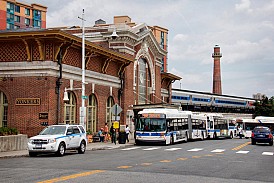
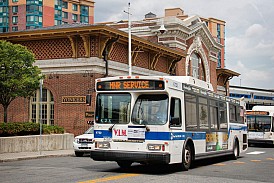
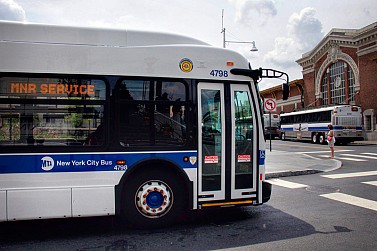
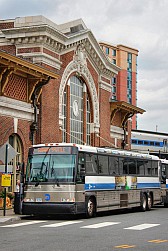
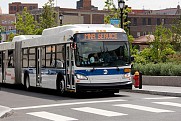
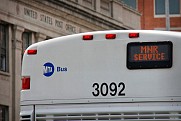
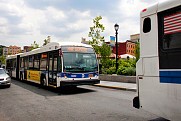
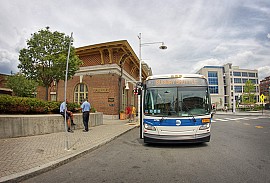
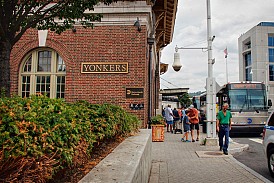
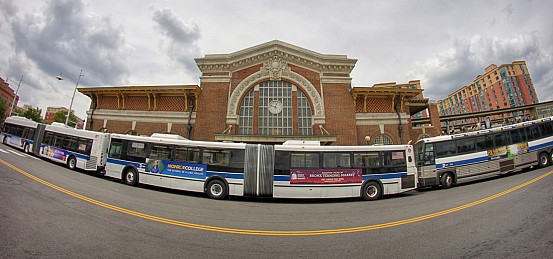
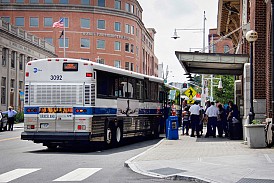
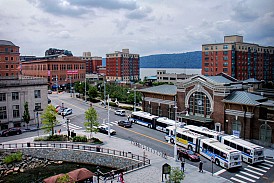
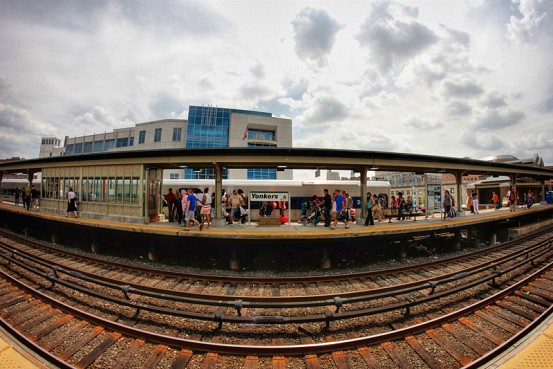
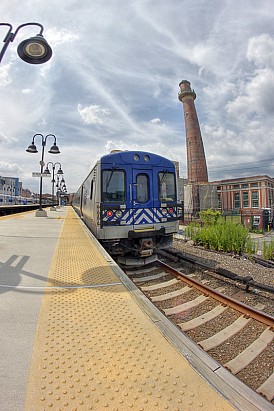
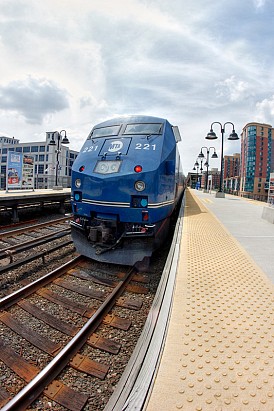
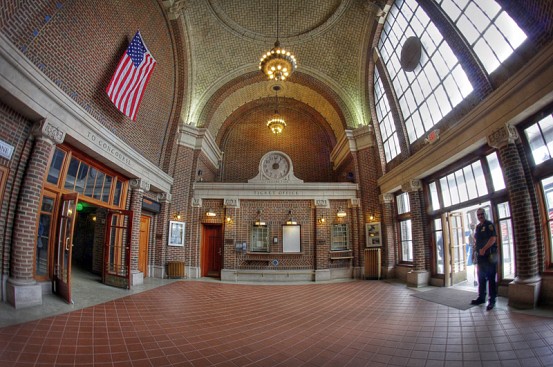
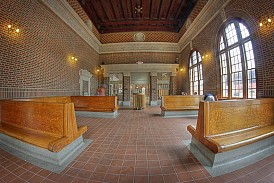
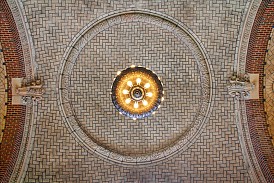
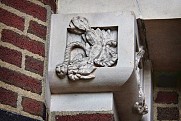
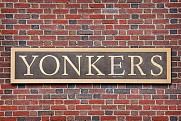
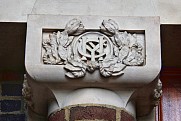
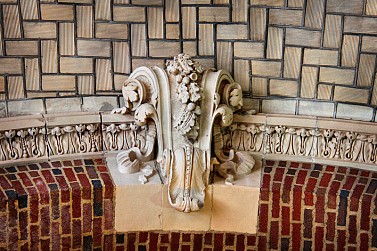
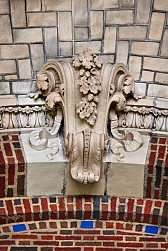
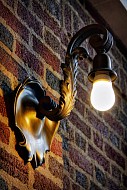
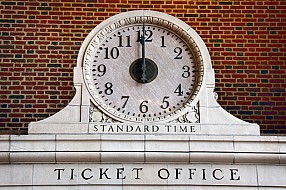
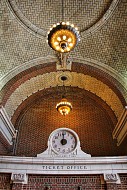
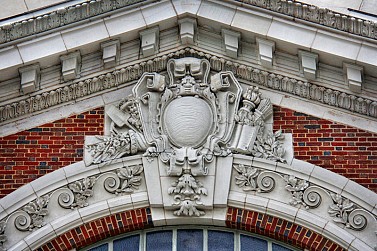
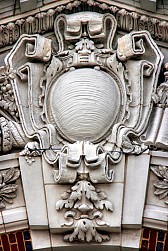
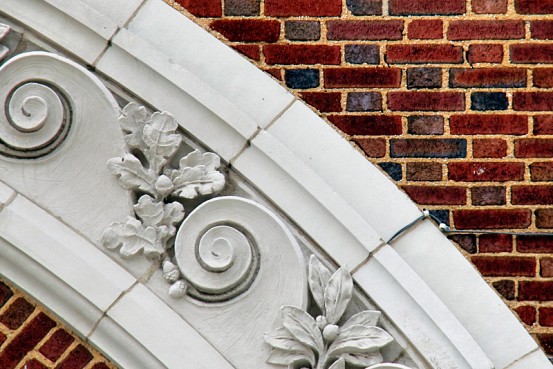
Excellent photos as usual!
And even the LIRR had a derailment this summer back on June 17th in one of the worst possible places…Penn Station! It certainly has been a rough couple months!
~ Patrick @ The LIRR Today
It’s not limited to NYC. Around Baltimore, a few weeks back a CSX train w/hazardous material hit a supply truck who was just getting over the double tracks at a private crossing… where signage had been degraded and there’s no automated system.
And today, another derailment on CSX tracks, which is going to affect the MARC Camden Line (Union Station to Camden Yards, Baltimore, MD) this Monday. CSX is trying to clear at least one track for use. Alternatives are starting a limited schedule at Dorsey with buses going up to Camden Yards (while there’s a Light Rail that’ll take folks to Penn Station and thus the Amtrak-owned MARC Penn Line).
Emily, nothng to do with derailments but everything to do with the “acorn search,” I’m sending you this link I found which may prove of interest to you:
http://www.vicsocny.org/PanoramaSPRING2013.pdf
Apropos of acorns, my hobby (besides trains) is thoroughbred horse racing, and I note that there is a famous race held at Belmont Park every spring called The Acorn, and I’m now wondering if the race was named by Alfred Gwynne Vanderbilt (grandson of the Commodore), who was the driving force behind New York thorougbred racing for much of the 20th century. So far, I haven’t been able to find out from my racetrack connections, but I certainly wouldn’t be surprised.
Wow, that link is pretty cool! Thanks for sharing! As for the horse race, I’d hardly be surprised if that is where the name came from!
On my last visit to Yonkers some years ago, I noticed that it had a traditional pay telephone booth, complete with a seat, table, door, light, and fan. (It was just to the left in photo yonkersacorns1.jpg). These days, pay phones themselves are quite rare, let alone one of the full service telephone booths.
Phone booth is still there, but I believe they took the phone out!
I wish Virginia Railway Express would take a page from Metro North operations. When there is some obstacle (a derailment, a presidential inauguration, snow), VRE will make sure people get back to their originating stations if the disruption happens in the afternoon, but if it happens in the morning (or the day before), we’re on our own. We get the dreaded “Seek alternate transportation” message. I’ve asked what alternate transportation they think we can find but I’ve never gotten an answer.
The derailment in Spain,the engineer of that derailed train was reading and
“reportably” on the phone,there was no cab signals or Automatic Train Control
at that curve to boot. If there was ATC at that curve,the train would have slowed
down or been stopped by the automatic systems.
CSX is on the “hot” seat for the mess near DV with the NTSB,due to their
garbage train taking out the Hudson line service.
MNCR is in trouble, not CSX. Though, admittedly, both have a crappy record when it comes to track maintenance. The sections of track where the derailments occurred (NH line in May, Hudson in July) both had improper/inadequate maintenance for their MAS.
I wouldn’t totally agree… ignoring the garbage train on the Hudson, there’s been an exploding train near Baltimore, one train derailing and striking another near Albany, derailed train in Florida leaking ethanol, a derailment in Virginia spilling coal everywhere, another derailment spilling ethanol in Buffalo… do I need to continue? Mind you, these are accidents that have happened in the past three months alone. Metro-North certainly has its issues, but CSX takes the cake.